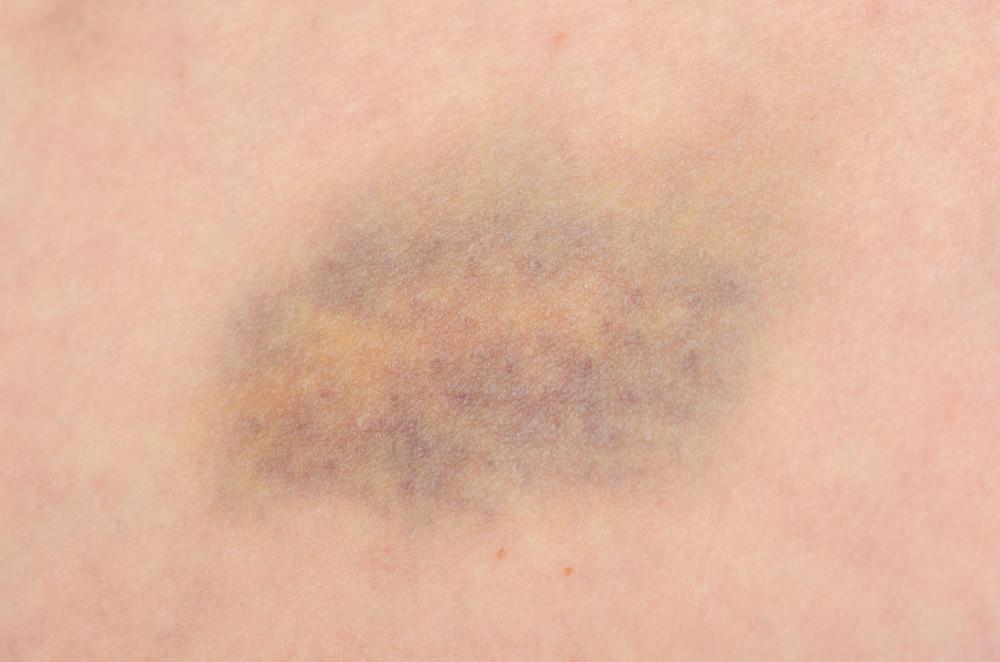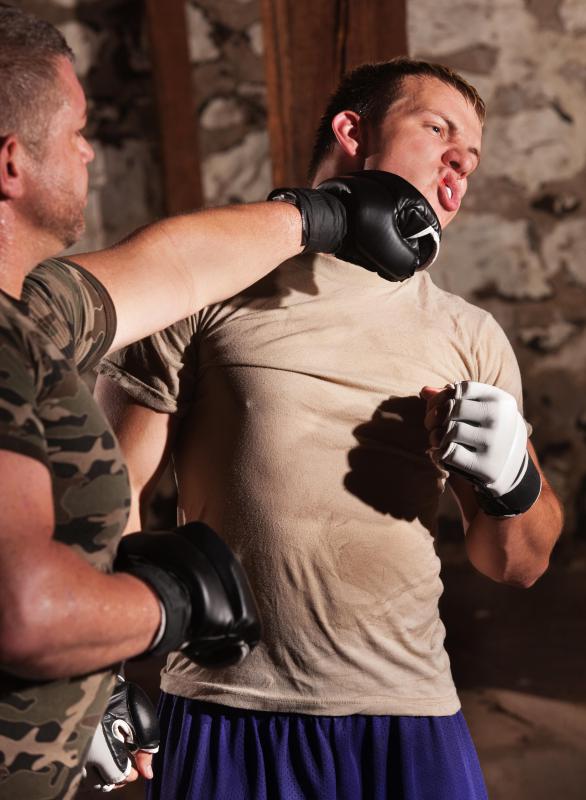At WiseGEEK, we're committed to delivering accurate, trustworthy information. Our expert-authored content is rigorously fact-checked and sourced from credible authorities. Discover how we uphold the highest standards in providing you with reliable knowledge.
What is Facial Trauma?
Facial trauma, also known as maxillofacial trauma, refers to any trauma that has occurred to the face. Typically, facial trauma involves lacerations, burns, and bruises. In addition, jaw fractures, nasal fractures, and eye injuries also encompass this condition. Generally, symptoms include pain, swelling, and disfigurement, as well as bleeding and loss of function to the affected area. Severe trauma to the face can cause impairment of jaw movement as well as blindness.
For the most part, facial trauma is rarely life threatening, however, it may cause severe bleeding and even affect the airway. Depending on the nature of the facial trauma, treatment can include bandaging, approximating and suturing wound edges, and administering antibiotics. Frequently, ice and pain medications are given to reduce pain and swelling. Sometimes, it may be necessary to move the bones back into the proper place, which could stave off disfigurement, and surgical intervention may be necessary as well.

Generally, when fractures are a possibility as a result of the facial trauma, x-rays need to be taken for diagnosis. Rarely, treatment for other, more severe conditions may be necessary, in cases of traumatic brain injury, which sometimes accompany facial trauma. One of the most prevalent causes of facial trauma is motor vehicle accidents. Because of this, safety measures such as wearing seat belts and wearing a helmet when riding a motorcycle need to be understood and carried out.

Commonly affected facial bones affected by trauma to the face include the maxilla and mandible, which refer to the upper jaw and lower jaw, respectively. In addition, the cheekbone, forehead, and orbital space of the eye may be affected. Typically, fractures of the nose, maxilla and base of the skull are accompanied by heavy bleeding. Special care needs to be taken to ensure minimal blood loss and reduction in infection risk. Generally, open injuries may require a tetanus shot if the patient's tetanus shot is not up to date.

Sometimes, in cases where a jaw fracture is present, the wiring of the jaw may be a necessary component of the treatment plan. Precautions need to be taken postoperatively because in the event that the patient vomits, aspiration or choking may occur. Generally, the patient will be given a tool, similar to small pliers that can snip the wires in the event of such an emergency. Aspiration can be a life-threatening event, so emergency medical attention needs to be employed. Fortunately, most cases of facial trauma are not as severe.
AS FEATURED ON:
AS FEATURED ON:













Discuss this Article
Post your comments